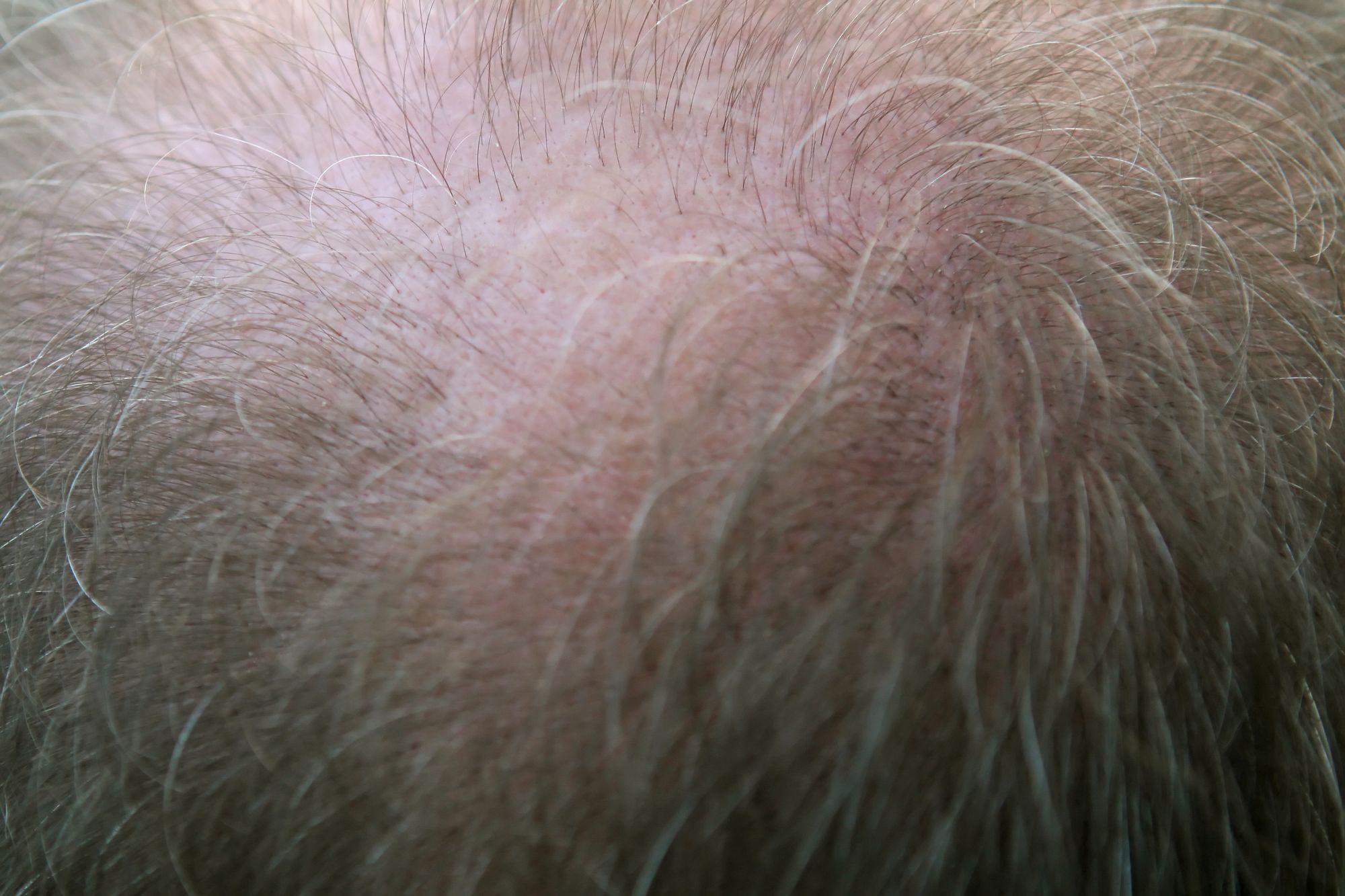The most common type of hair loss in women is female pattern baldness, also known as alopecia, baldness in women, hereditary balding or thinning, and androgenetic alopecia in women.
Causes
Hair grows from follicles, which are tiny holes in the skin. Baldness happens when these follicles shrink over time, causing hair to become shorter and finer until eventually, they stop growing new hair. However, the follicles are still alive, which means hair growth is still possible. The cause of female pattern baldness is not well-known but it could be related to certain factors.
Factors that can contribute to hair loss include aging, changes in hormone levels (specifically androgens which can stimulate male characteristics), a family history of male or female pattern baldness, heavy blood loss during menstrual periods, and taking certain medications like estrogenic oral contraceptives.
Symptoms
Female pattern baldness is distinct from male pattern baldness and causes thinning of hair.
- The hair tends to get thinner on the top and crown of the head, often resulting in a widened center hair part. This type of hair loss is commonly referred to as the Christmas tree pattern.
- The hairline at the front is normal and recedes naturally over time, which is a common occurrence for everyone.
- Women experiencing hair loss usually do not go completely bald like men sometimes do.
- When there is an excess of androgens, it makes hair on the head thinner and hair on the face coarser.
Generally, one does not see itching or skin sores on the scalp.
Tests and Exams
The diagnosis of female pattern baldness is typically based on:
- Assuming that other causes of hair loss, such as thyroid disease or iron deficiency, have been eliminated as possibilities.
- The way hair falls out and the pattern it follows.
- Please provide your medical history.
The health care provider will check if there are any other signs of excessive male hormone (androgen) levels in your body, such as:
- There is new hair growth occurring in abnormal areas, such as the face or between the belly button and pubic area.
- The message could be rewritten for clarity as: "If you experience changes in your menstrual cycle or notice an enlargement of your clitoris, please seek medical attention."
- New facial acne
To diagnose skin disorders causing hair loss, either a skin biopsy of the scalp or blood tests might be performed.
Using a dermoscope or a microscope to examine the hair can help in identifying any issues related to the hair shaft's structure.
Treatment
Female pattern baldness can result in permanent hair loss if left untreated. Typically, the degree of hair loss is mild to moderate. If you are satisfied with your appearance, there is no need for treatment.
Medicines
Minoxidil is the only medication for treating female pattern baldness that has been approved by the Food and Drug Administration (FDA) in the United States.
- The product is meant to be applied to the scalp.
- It is recommended that women use either the 2% solution or 5% foam.
- Minoxidil has been found to promote hair growth in approximately 20% of women. It can also help to reduce hair loss in many women.
- To maintain the effects of this medicine, it is important to use it for an extended period of time. If you stop using it, you may experience hair loss again and any hair that grew with the help of the medicine may also fall out.
If minoxidil is not effective, your healthcare provider may suggest alternative medications including ketoconazole, spironolactone, birth control pills, cimetidine, and others. If you require additional information about these medications, your healthcare provider can provide more details.
Hair Transplant
This procedure has been found to be effective in females.
- Which individuals do not have a good response to medical treatment?
- Individuals where there were no significant cosmetic improvements with lesser treatments.
Hair transplant involves removing small hair plugs from areas where the hair is thicker and transplanting them to areas where there is hair loss. Skin may show minor scarring where hair is removed and there is a small risk of skin infection. The procedure may require multiple transplants which can be costly. Nevertheless, the outcomes are typically outstanding and long-lasting.
Other Solutions
To hide hair loss and improve your appearance, you could consider using hair weaving, hairpieces, or changing your hairstyle. These methods are usually safe and affordable, and are often recommended for dealing with female pattern baldness.
Outlook (Prognosis)
Baldness in women usually does not indicate any medical condition. Losing hair can lower confidence and lead to nervousness. The loss of hair is typically irreversible.
When should you reach out to a medical professional?
If you are experiencing hair loss along with symptoms like itching, skin irritation, or other signs, it's essential to contact your healthcare provider. They can help determine if there is an underlying medical condition causing your hair loss, which may be treatable.
Prevention
Unfortunately, there is currently no known way to prevent female pattern baldness.






